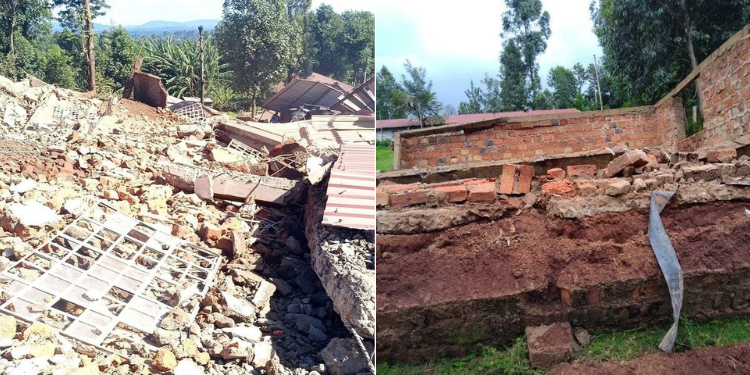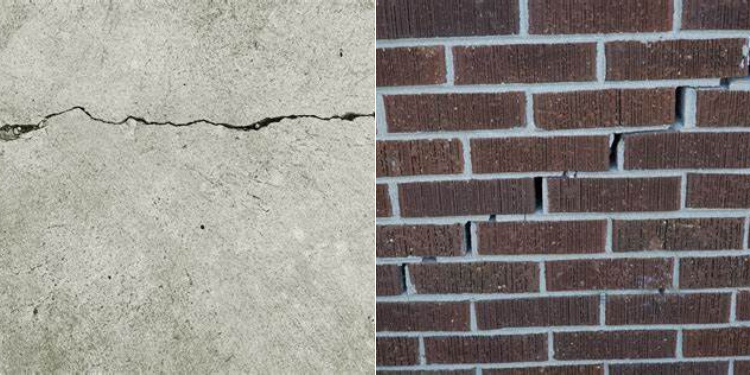One person died and three others sustained injuries after a perimeter wall collapsed in Ruaka, Kiambu County on Monday, April 22 following heavy rains. This was not an isolated case. Over the years, free-standing concrete walls have collapsed in Kenya and around the world.
It is imperative for everyone in the building industry to recognize the dangers posed by vulnerable walls, including those that appear slender, are loose, have varying soil levels on each side, lean, or show signs of damage or deterioration.
When these walls collapse, they typically fall as masonry slabs, breaking upon impact with the ground.
Regardless of the force behind the collapse, individuals caught between such slabs and the ground, especially if shorter than the wall’s height, face the risk of a traumatic and potentially fatal blow.

Many free-standing walls suffer from poor construction and inadequate maintenance, further exacerbating the risk.
Often, these walls are not structurally designed or selected according to recognized guidelines but are built by small builders or homeowners.
To mitigate risks, it is advisable to prevent water accumulation at the back face of the wall.
This can be achieved by re-grading the backfill material surface or constructing small concrete culverts to divert and redirect water away from it.
Such proactive measures can help reduce the likelihood of collapses and safeguard against potential tragedies.
Also Read: Death Reported After Perimeter Wall Collapses Amid Heavy Rains
Construction Errors that Lead to Walls Collapsing
Construction errors have been identified as the primary cause behind a spate of retaining wall failures, highlighting the critical importance of precise construction techniques.
These errors, ranging from poor foundation work to improper drainage systems, have resulted in compromised structural integrity and increased risks for property owners.
One prevalent issue observed is the use of a poor foundation, which significantly reduces stability and leads to increased leaning of retaining walls.
This oversight in construction has left many walls susceptible to collapse, posing hazards to adjacent properties and occupants.
Additionally, inadequate compaction during construction has led to settling and soil displacement, further exacerbating the problem.
Walls built with insufficient compaction have experienced gradual sinking, causing significant structural damage over time.
Furthermore, the consequences of insufficient backfilling have become apparent, with excessive pressure exerted on the walls, leading to bulging and deformation.
This has compromised the structural integrity of numerous retaining walls, necessitating costly repairs and reconstruction efforts.
Also, improper drainage systems have exacerbated the situation, resulting in water buildup and erosion underneath the walls.
The lack of proper drainage planning has led to undermining of the walls’ foundations, increasing the risk of collapse and posing safety concerns for surrounding areas.
Finally, neglected weeding and cleaning of weeds can destabilize the walls. Weeds and debris accumulating around retaining walls will destabilize the structures, increasing the likelihood of failure.
Also Read: Several Trapped in Debris as 5 Storey Building Collapses
Types of Wall Cracks
Cracks in walls can signify various underlying issues, each with its own implications:
- Hairline Cracks: These minor surface cracks may seem insignificant but can be early indicators of potential problems.
- Horizontal Cracks: Horizontal cracks often indicate excessive soil pressure or poor design, signifying a more serious structural issue.
- Vertical Cracks: Vertical cracks typically point to problems with the foundation or drainage system, necessitating thorough investigation and repair.
- Stair-Stepped Cracks: They are diagonal or stepped fractures along brickwork or mortar joints. their presence suggests significant structural failure, requiring immediate attention and intervention to prevent catastrophic collapse.
Preventing Concrete Wall Failures
Retaining walls serve as vital structures in landscaping, providing stability and preventing erosion.
However, like any construction, they are subject to wear and tear over time. Here’s a comprehensive guide on preventing retaining wall issues before they occur.
Regular Inspections: Routine inspections are paramount in identifying potential problems early on.
Key points to check include cracks, bulging, leaning in the wall structure, functionality of drainage systems, signs of soil erosion or settling, and any vegetation that may impact stability.
Proper Drainage Planning: Effective drainage is crucial for retaining wall longevity. Strategies such as slope analysis, French drains to divert water, weep holes to allow water escape, and gravel backfill for enhanced drainage within the soil can significantly reduce the risk of water-related damage.
Material Selection: Choosing the right materials is vital. Factors such as soil type, wall height, aesthetics, and climate should influence material decisions to ensure durability and functionality.
Professional Installation: Opting for professional installation offers numerous advantages, including expertise in design and construction, efficient completion, warranties for quality assurance, and compliance with local building codes.
Landscaping Maintenance: Regular maintenance plays a pivotal role in preserving retaining walls.
Tips such as weeding and cleaning to prevent weed pressure, mulching for moisture retention, erosion control, and pruning to prevent vegetation interference can extend the wall’s lifespan.
Do you want to be part of an updated community without the interruptions of unwanted messages? Click the link below and join our WhatsApp Channel!
https://whatsapp.com/channel/0029VaB3k54HltYFiQ1f2i2C






















































![Senator Allan Chesang And Chanelle Kittony Wed In A Colourful Ceremony [Photos] Trans Nzoia Senator Allan Chesang With Channelle Kittony/Oscar Sudi]( https://thekenyatimescdn-ese7d3e7ghdnbfa9.z01.azurefd.net/prodimages/uploads/2025/11/Trans-Nzoia-Senator-Allan-Chesang-with-Channelle-KittonyOscar-Sudi-360x180.png)




















